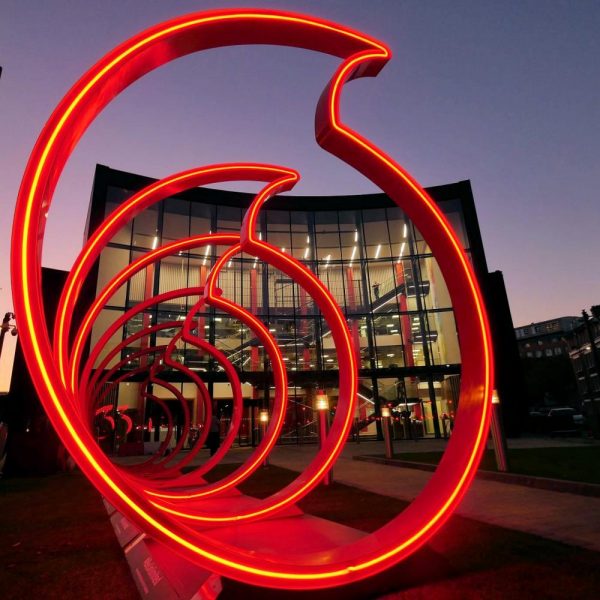Vodafone UK Test Software Enhancement That Boosted 5G Speeds to 1.7Gbps

Broadband ISP and mobile operator Vodafone have announced that they’ve “successfully completed tests of a major 5G software enhancement” with Nokia, Qualcomm Technologies and Xiaomi. The change, once deployed, promises to boost data (mobile broadband) throughput for users by nearly 25%.
The test, which involved a Xiaomi 15 Ultra Smartphone equipped with the Snapdragon® 8 Elite Mobile Platform (chipset) and Nokia’s latest Habrok 64 massive MIMO radios, essentially increased the use of Quadrature Amplitude Modulation (QAM) on their network from 256 to 1024.
The use of QAM is quite common in wireless networks and can be thought of as a way of getting greater efficiency out of existing radio spectrum. The method involves sending data by changing (modulating) two things about the signal – Amplitude (strength) and Phase (timing). Put another way, QAM-256 allows the use of 256 combinations (Symbols) of amplitude and phase, thus 1024 is a lot more complex but also allows you to send more bits of data.
Advertisement
In this case, Vodafone’s engineers and their partners managed to achieve download speeds of up to 1.7 Gigabits per second (Gbps) over 500 metres of distance on 3.5GHz spectrum (we assume they mean the band, rather than total spectrum frequency) – this occurred at their Ciudad Real centre in Spain. But the operator didn’t provide both the before and after figures together, although from the headline we assume they got 25% extra speed.
In this case, the technology aims to save energy by increasing data throughput and signal efficiency without the need for additional equipment at the mobile base station.
Alberto Ripepi, Chief Network Officer of Vodafone, said:
“We are looking at new ways to extract greater performance from our 5G networks to enhance the customer experience. Securing widespread support for this latest technology at the network level and within the latest smartphones will help us achieve that aim.”
Mark Atkinson, Senior VP and Head of Radio Access Networks at Nokia, said:
“This successful trial with Vodafone demonstrates the benefits of high-order modulation technology in delivering fast speeds with reduced capacity. Nokia is at the forefront of these advanced technologies that enable premium performance, support new enterprise and consumer services and deliver superior user experiences.”
Vodafone notes that traffic volumes on their UK network have grown 25-fold over the past ten years. Additionally, approximately 90% of all mobile data traffic across Europe uses the network downlink channel to users’ smartphones. Adopting 1024 QAM will naturally help to manage that rising demand.
The network operator said they “anticipate” that customers will be able to fully benefit from this 5G enhancement in the “near future“, particularly once more device manufacturers incorporate the technology into their products/chipsets.
Advertisement
Mark is a professional technology writer, IT consultant and computer engineer from Dorset (England), he also founded ISPreview in 1999 and enjoys analysing the latest telecoms and broadband developments. Find me on X (Twitter), Mastodon, Facebook, BlueSky, Threads.net and Linkedin.
« Broadband ISP Plusnet Gives Up on Free UK Email and Webspace Features























































But…..there is no Vodafone 5G in Telford, ZERO!
There’s barely any 4G where I live, let alone 5G. It is absolutely dire.
But instead of focusing on delivering infrastructure projects that will improve coverage and give everyone a decent /usable/ speed, they waste their time on headline-grabbing fantastical nonsense like this.
1.7 Gbps. What even is the point of that on a mobile device? Give me 10 Mbps guaranteed everywhere and I would gladly take it over this variable nonsense they have currently.
Network capacity is shared, this increases that capacity without needing more spectrum or antennae.
You can’t seriously think testing this in their facility in Spain diverted resources from building masts in the UK, either of you?
5g in the UK is terrible. In Cyprus on my balcony I get 1.25gbit download from my phone. UK is a quarter of that
On my balcony in Corfu I get barely a quarter of the speeds I get at home in the uk
Wow that’s impressive what mobile network is that on in Cyprus ? As when I visited last year I used sims from both Cyta/Vodafone and MTN but they were not that sort of speed more like 150Mbps this was in Paphos, Nicosia and Protaras
I’d be happy with just the quarter if it was consistent. Not dependent on my location or conversion…
Congestion* (typo, sorry)
I can get 1.2Gbps from three no problem.
just because you don’t doesn’t mean the entire UK is in the same situation as you
I can get 1.6Gbps from Three. Not sure what the point of comparing a single location is. Some places will be crap, others will be good. Also the UK has 26x more land.
The 25pc increase will only be achieved under test conditions. Previous work in Germany suggests that the best improvement will typically be about 20pc. However, the device determines the modulation and coding rate with the tower based on the signal, so the higher modulation rate will not always be offered.
They’d have to provide 5G first! Now the merger is complete though I’m not holding my breath, even though it’d take one mast to cover about 90% of the gap in Three’s 5G coverage here.
Ofcom states that the 5G covers about 62pc of the UK landmass. The rollouts are in hand and are yet to be completed.
What is the use case for these 5G speeds?
Streaming an HD video requires around 5Mbs or if you felt the need for a 4k video on a tiny screen you would need aorund 25Mbs.
Why dont they focus on giving decent ubiquitous coverage everywhere over lofty in limited locations.
The benefits of 5G have been stated frequently. The providers are focused on coverage for those areas that can be feasibly reached.